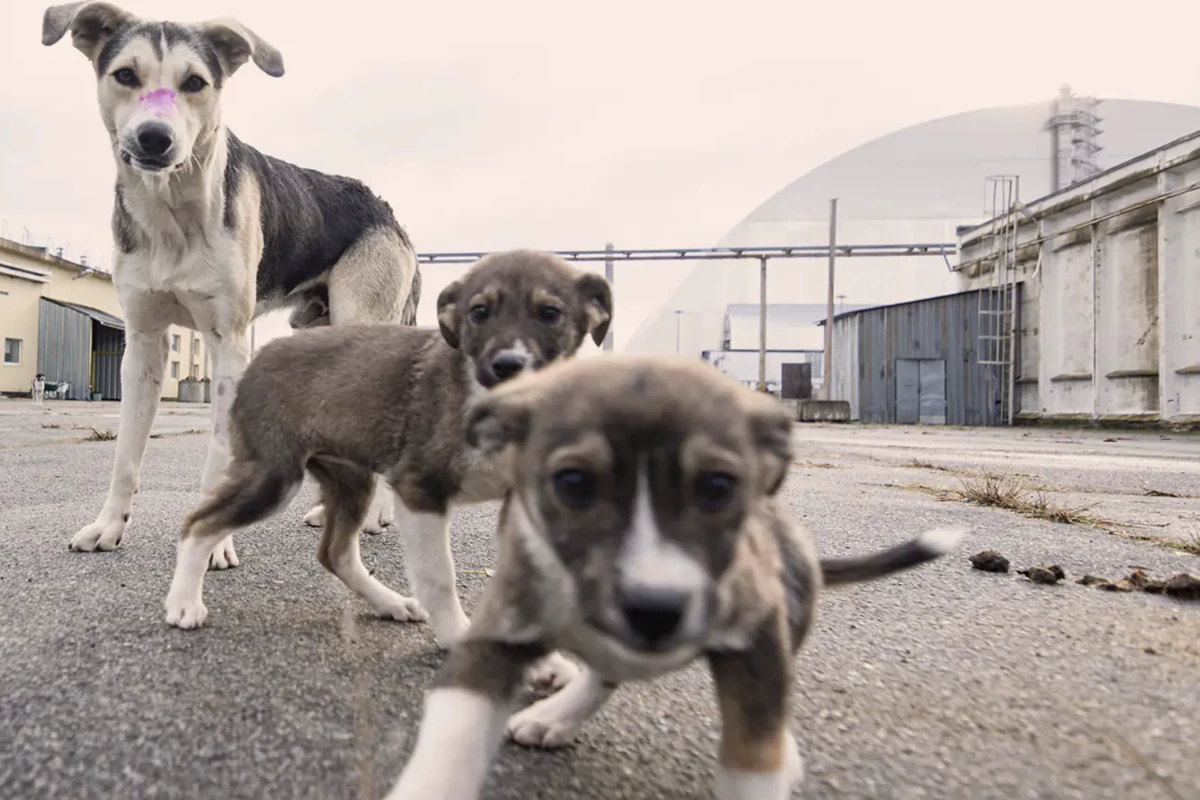On the northern edge of Ukraine, a surprising community of animals thrives within the 30 km (19-mile) exclusion zone surrounding the abandoned Chornobyl nuclear plant. This area, known for the catastrophic disaster in 1986, is now home to thousands of animals, including around 900 stray dogs, descendants of pets left behind by evacuated residents. Recently, three of these dogs were observed with striking blue fur, raising questions about the possible effects of radiation or genetic mutations.
The peculiar coloration has garnered significant attention, prompting a response from the scientific community. According to Timothy A. Mousseau, a biologist and Scientific Advisor for the Dogs of Chornobyl Program under the Clean Futures Fund, the blue fur likely resulted from the dogs rolling in waste, rather than any radiation-induced mutation. “The blue dye likely came from a tipped-over port-a-potty where the dogs were rolling around,” Mousseau explained in a recent social media post. Following veterinary examinations, there were no signs of radiation-related illnesses or genetic damage among the dogs, dispelling initial fears regarding their health.
The ongoing research into Chornobyl’s canine population reveals a richer story about adaptation and survival. A study led by Mousseau assessed the genetic structure of 302 dogs across free-roaming groups within the exclusion zone and found that these populations are genetically distinct from domestic breeds elsewhere in Ukraine and Europe.
The research team discovered significant genetic variation among the dogs, indicating that isolation from other populations has led to gradual changes in their genetic makeup. “Kinship analysis reveals 15 families, with the largest spanning all collection sites within the radioactive exclusion zone, reflecting migration of dogs between the power plant and Chornobyl City,” the researchers noted.
The findings suggest that certain families of dogs have adapted to their unique environments within the exclusion zone. Dogs living near the plant exhibited higher genetic similarity compared to those in urban areas, despite the relatively small distance between them. The study identified 391 “outlier loci,” regions in the genome where the two populations differed significantly, with more than 50 candidate genes linked to DNA repair, immune function, and stress response.
While some speculate that these adaptations may provide increased resistance to environmental stressors, subsequent studies found no elevated mutation rates among the dogs living in the most contaminated areas. Mousseau emphasized that any genetic differences observed are likely due to isolation rather than direct effects of radiation exposure.
In addition to the stray dog population, the Chornobyl exclusion zone supports a diverse range of wildlife. Wolves, lynx, wild boar, and even the endangered Przewalski’s horse have been documented in the area. A 2004 study indicated that radiation levels did not adversely affect the populations of several small mammals, highlighting a surprising resilience amid the challenging environment.
Recent investigations into gut microbiomes of small mammals revealed that local environments have a more significant influence than radiation. While radiation can impose biological damage, the absence of human activity, such as farming and hunting, appears to have fostered a thriving ecosystem.
Despite the challenges posed by radiation, Mousseau noted that many animal populations have demonstrated resilience. “The majority of studies investigating populations of plants, animals, and microbes in the Chornobyl Zone have not found any evidence of signs of adaptive evolution,” he stated.
The dynamics within the exclusion zone present a complex interplay between wildlife and environmental factors. The Chornobyl dogs, in particular, continue to capture public interest and reshape perceptions of the area, once thought to be devoid of life. Mousseau pointed out that, contrary to media reports, the dogs show no elevated tumor rates, underscoring the need for a nuanced understanding of health outcomes among these animals.
As research continues, the Chornobyl exclusion zone remains a focal point for studying the long-term effects of radiation and the resilience of life in adverse conditions. The blue dogs, while initially a curious phenomenon, represent a larger narrative about adaptation, survival, and the unexpected richness of life in a once-devastated landscape.
